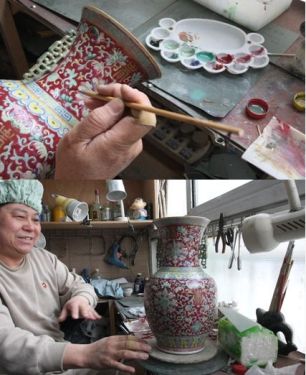Bosgoo(China)Tecgnology Co., Ltd , http://www.bosgootest.com His name is Ma Ruichao and he lives in the Cliff Cliff Community. His home is his porcelain restoration studio.
His name is Ma Ruichao and he lives in the Cliff Cliff Community. His home is his porcelain restoration studio.
Ma Ruichao's grandfather is a Tianjin man. He opened an antique shop and did some tinkering. Ma Ruichao saw his ears from scratch, and he learned to saw porcelain less than 10 years old. Since the mid-to-late 1980s, as domestic collections have continued to heat up, the work of repairing porcelain has continued to increase, and the restoration of commercial exchanges has become the main task of Ma Ruichao.
To splice the broken porcelain to restore the original shape, people often think of the traditional "saw porcelain" craft, but do you believe that the damaged porcelain can be repaired to the naked eye to completely eliminate the traces? Dalian has such a master who repairs porcelain.
Talk about the process of repairing porcelain for at least a month or two. Ma Ruichao used “high-temperature thermal repair†to “break the mirror and re-circle.†“First determine the shape of the damaged cultural relics, clean the debris and then splicing, then grooving, gluing, grinding, coloring, replenishing color, glazing, high-temperature barbecue, and finally be old.†A good repair of a porcelain needs a It will be two months or even longer.
The most critical and difficult step in high-temperature hot porcelain repair is polishing. This not only requires long-term experience, but also requires a very high level of understanding. The poor polishing will affect the coloring of the surface. Ma Ruichao said that polishing is the most time-consuming and laborious process. Once it is done badly, it will fall short. He had spent thousands of dollars on digital electron microscopes, but soon he would not use them. "It's too much trouble, it's not as accurate as it looks."
Another major difficulty in porcelain restoration is the imitation of the original color, which also requires the use of eyesight to adjust the color.
Eye contact interface error control in 0.03 mm Marui Super eye power how bad? He said: "In the industry, 1 millimeter equals 100 tracks, I can see three tracks at a glance, that is, the interface error after grinding is controlled at 0.03 mm." The reporter carefully observed the repaired porcelain, not only can not see the traces, nor feel it Strange.
Ma Ruichao has repaired two pieces of ancient porcelain treasures worth tens of millions. This is also the two works that he is proud of. "In this line, the reputation is very important. The collectors are generally assured that their baby will be restored to me by the introduction of acquaintances. They trust me, porcelain is not placed on me here and there is no sign of an agreement. Repair it and pick it up."